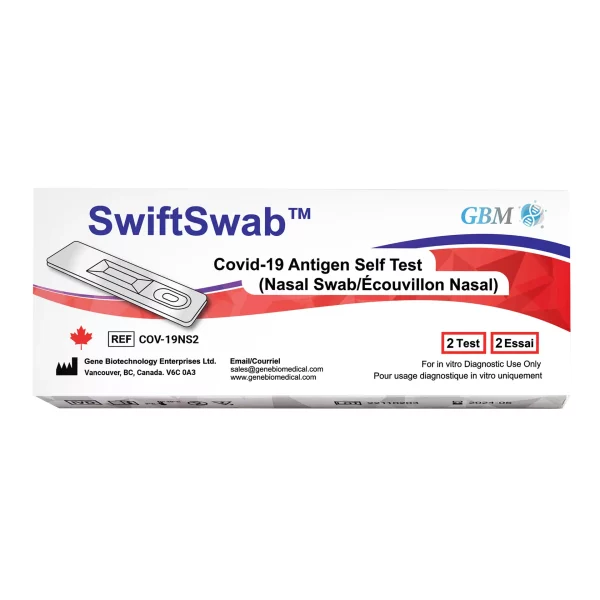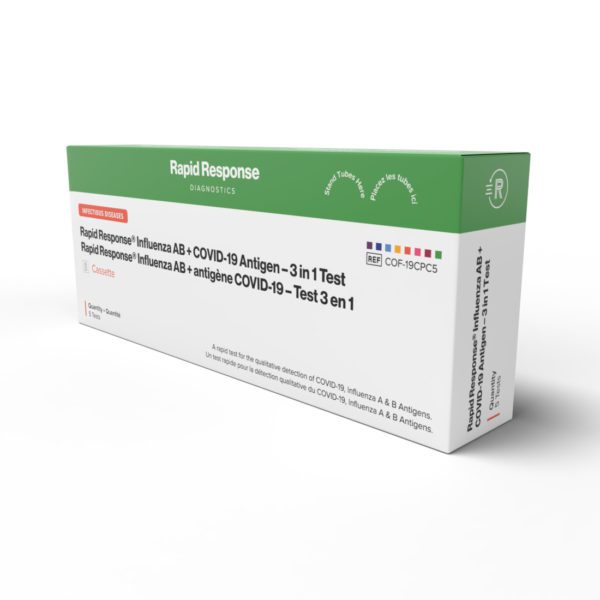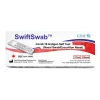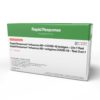Influenza, commonly known as the flu, is a highly contagious respiratory illness caused by influenza viruses. This article delves into the intricate details of how these viruses are transmitted and spread among individuals. Understanding the mechanisms of influenza transmission is crucial for preventing its widespread prevalence and reducing the risk of serious flu complications.
The flu viruses can be transmitted through direct contact, respiratory droplets, and contaminated surfaces, so maintaining good respiratory hygiene and practicing preventive measures is important. This article also explores the significance of various preventive measures in mitigating the transmission and severity of the flu, highlighting its role in protecting individuals from the various strains of influenza viruses that circulate during flu seasons.
How Do People Get the Flu?

The most common mode of flu transmission is through respiratory droplets expelled by an infected person when they cough, sneeze, or even talk. These droplets can travel a short distance and land on the mouths or noses of nearby individuals, allowing the flu virus to enter their bodies. Inhaling these contaminated droplets is a significant pathway for flu transmission.
Direct contact with surfaces or objects contaminated with flu viruses is another route for contracting the flu. The viruses can survive on surfaces for a varying period. When a person touches an infected surface and then touches their face, particularly the mouth, nose, or eyes, they can introduce the virus into their respiratory system.
Furthermore, it is important to note that infected individuals can spread the flu before they exhibit any symptoms. This means that individuals may unknowingly transmit the virus to others during incubation, which typically lasts one to four days after exposure.
What Are the Most Common Flu Symptom

When individuals contract the flu, they may experience a range of symptoms that indicate influenza infection. Recognizing these symptoms is essential for early detection and appropriate management. The most common flu symptoms include:
- Fever: The flu often presents with a sudden high fever, typically above 100.4°F (38°C). This fever is often accompanied by chills, body aches, and general malaise.
- Respiratory Symptoms: Influenza primarily affects the respiratory system. Individuals with the flu may experience a dry cough, sore throat, and congestion. They may also have a runny nose and frequent sneezing. However, compared to the common cold, these respiratory symptoms tend to be more severe and pronounced.
- Fatigue and Weakness: Flu infection can cause significant fatigue and weakness, leading to a lack of energy and motivation. These symptoms may persist for several weeks even after the acute illness subsides.
- Muscle and Joint Pain: Many individuals with the flu experience muscle and joint pain, often described as body aches. These symptoms can be quite uncomfortable and may contribute to feelings of fatigue.
- Headache: Headaches are a common symptom of the flu. They can range from mild to severe and may be accompanied by other flu-related symptoms.
It is important to note that while healthy adults generally recover from the flu within a few days to a couple of weeks, certain individuals are at higher risk for flu-related complications. These include individuals with weakened immune systems, young children, older adults, and individuals with underlying health conditions such as lung disease or chronic illnesses.
If you experience flu-like symptoms or suspect you have the flu, it is advisable to seek medical attention for proper diagnosis and guidance on appropriate treatment. Prompt medical care can help alleviate symptoms, prevent complications, and minimize the spread of the flu to others.
How Flu spreads

The spread of the flu virus occurs through specific pathways, primarily involving respiratory droplets and contact with contaminated surfaces. Understanding these modes of transmission is crucial for implementing effective preventive measures. This section provides a detailed explanation of how the flu virus spreads from person to person.
When an infected individual coughs, sneezes, or talks, respiratory droplets containing the flu virus are expelled into the air. These droplets can contain a significant amount of virus particles. If a susceptible individual is in close proximity to the infected person, they can inhale these droplets, allowing the virus to enter their respiratory system.
Respiratory droplets can travel a short distance, typically within six feet, before falling to the ground or onto nearby surfaces. This is why maintaining physical distance from individuals with flu symptoms is crucial in preventing the transmission of the virus.
The flu virus can also spread through direct contact with contaminated surfaces or objects. When an infected person touches their mouth, nose, or eyes and then touches surfaces such as doorknobs, handrails, or shared objects, they can leave behind the virus. Subsequent contact by another person with the contaminated surface allows the virus to transfer to their hands. If the individual then touches their face, particularly their mouth, nose, or eyes, the virus can enter their respiratory system.
It is important to note that the flu virus can survive on surfaces for a limited period, ranging from a few hours to several days, depending on various factors such as temperature and humidity. This highlights the significance of proper hand hygiene and regular disinfection of frequently touched surfaces to minimize the risk of transmission.
Once the flu virus enters the respiratory system of a susceptible individual, it attaches to the cells lining the nose, throat, and lungs. It then begins to replicate, leading to an infection that manifests as flu-like symptoms.
How contagious is flu?
The flu is highly contagious, and individuals infected with the virus can transmit it to others before they even develop symptoms. This makes it challenging to control the spread of the flu, particularly during periods of high influenza activity or seasonal flu epidemics.
The contagiousness of the flu can vary depending on several factors, including the type and strain of the influenza virus, the viral load in respiratory secretions, and the susceptibility of individuals who come into contact with the virus.
How is the Flu diagnosed?

Clinical evaluation is often the initial step in diagnosing the flu. Healthcare professionals assess an individual’s symptoms, medical history, and potential exposure to the flu virus. Common flu symptoms include fever, cough, sore throat, runny or stuffy nose, body aches, fatigue, and respiratory symptoms. However, these symptoms can also occur with other respiratory infections, making a definitive diagnosis challenging based solely on clinical evaluation.
Laboratory testing plays a crucial role in confirming a flu diagnosis. The most commonly used method is a rapid influenza diagnostic test (RIDT). This test detects specific influenza antigens or viral genetic material in respiratory samples, such as nasal or throat swabs. RIDTs provide quick results, typically within 15-30 minutes, allowing healthcare professionals to promptly initiate appropriate treatment or implement infection control measures.
In some cases, particularly when rapid tests yield negative results despite strong clinical suspicion, further laboratory testing may be necessary. This includes nucleic acid amplification tests (NAATs), such as reverse transcription-polymerase chain reaction (RT-PCR) tests. NAATs are highly sensitive and specific, capable of detecting and identifying specific influenza strains. However, they usually require specialized laboratory facilities and may take longer to obtain results compared to RIDTs.
It is important to note that during flu seasons or outbreaks, healthcare professionals may diagnose the flu based on clinical symptoms alone, without laboratory confirmation, especially in individuals at low risk of complications. This approach helps ensure timely treatment and implementation of preventive measures.
Additionally, healthcare professionals may order further tests or evaluations to assess for potential flu-related complications. These can include chest X-rays to evaluate lung involvement, blood tests to assess immune response or detect secondary bacterial infections, or other imaging studies as needed.
What’s the Best Way to Prevent the Flu?
Preventing the flu is of utmost importance to safeguard public health and minimize the risk of serious complications associated with the virus. Here are some of the most effective strategies for preventing the flu, focusing on key preventive measures and highlighting the importance of vaccination.
Get Vaccinated:
The influenza vaccine or flu vaccine is the most effective way to prevent the flu. Annual vaccination is recommended for individuals aged six months and older. The vaccine stimulates the immune system to produce antibodies specific to the flu viruses included in the vaccine, reducing the risk of infection and severe illness. Vaccination not only protects the vaccinated individual but also contributes to community immunity, preventing the spread of flu viruses.
Practice Good Hand Hygiene:
Regular handwashing with soap and water for at least 20 seconds is crucial in preventing the transmission of flu viruses. If soap and water are not available, using an alcohol-based hand sanitizer with at least 60% alcohol content can effectively kill flu viruses on the hands.
Cover Coughs and Sneezes:
When coughing or sneezing, individuals should cover their mouth and nose with a tissue or the inner part of their elbow. This helps prevent the release of respiratory droplets containing the flu virus into the air and reduces the risk of transmission to others.
Avoid Close Contact with Infected Individuals:
The flu virus spreads easily from person to person. Avoiding close contact with individuals who are sick with flu-like symptoms, such as fever, cough, and sore throat, can significantly reduce the risk of becoming infected.
Practice Respiratory Etiquette:
Along with covering coughs and sneezes, practicing respiratory etiquette involves disposing of used tissues properly and immediately washing hands to prevent the spread of flu viruses.
Maintain a Healthy Lifestyle:
A strong and healthy immune system can help fight off infections, including the flu. Engaging in regular physical activity, getting adequate sleep, eating a balanced diet, managing stress levels, and avoiding smoking contribute to overall health and a robust immune system.
It is important to note that these preventive measures should be followed consistently, not just during flu seasons. Additionally, individuals at higher risk of severe flu complications, such as young children, older adults, pregnant women, and individuals with certain medical conditions, should take extra precautions and consult with healthcare professionals for specific guidance.
A multi-faceted approach is essential in preventing the flu. Vaccination, practicing good hand hygiene, covering coughs and sneezes, avoiding close contact with infected individuals, practicing respiratory etiquette, and maintaining a healthy lifestyle are key strategies for preventing flu transmission. By adopting these preventive measures, individuals can significantly reduce their risk of flu infection, protect vulnerable populations, and contribute to the overall public health effort against the flu.
What Are the Best Treatment Options for the Flu?
effective treatment of the flu is essential in alleviating symptoms, reducing the duration of illness, and preventing complications. This section explores the best treatment options available for the flu, emphasizing the importance of early intervention and tailored care.
Antiviral Medications:
Antiviral medications are a key component of flu treatment, particularly for individuals at higher risk of complications or those who experience severe symptoms. These medications work by inhibiting the replication of the flu virus in the body. They are most effective when started within 48 hours of symptom onset, but they can still provide benefits if initiated later. Healthcare professionals prescribe antiviral medications based on individual assessment and risk factors. Commonly used antivirals for the flu include oseltamivir, zanamivir, and peramivir.
Supportive Care:
Supportive care plays a crucial role in managing flu symptoms and promoting recovery. This includes getting plenty of rest, staying hydrated by drinking fluids, and using over-the-counter pain relievers and fever reducers, such as acetaminophen or ibuprofen, to alleviate discomfort. Cough suppressants and decongestants may also provide relief from respiratory symptoms. However, it is important to consult with a healthcare professional before taking any medications, especially in children or individuals with underlying medical conditions.
Infection Control:
Individuals who are sick with the flu should take measures to prevent the spread of the virus to others. This includes staying home from school or work until they have been fever-free for at least 24 hours without the use of fever-reducing medications. It is also important to cover coughs and sneezes with a tissue or the inner part of the elbow and practice regular hand hygiene to minimize the risk of transmitting the virus to others.
It is important to note that antibiotics are not effective against the flu because it is caused by a virus, not bacteria. Antibiotics should only be prescribed if there is a secondary bacterial infection present.
In settings such as long-term care facilities or hospitals, additional infection control measures may be implemented to prevent the spread of the flu among vulnerable populations and healthcare workers. These measures can include isolation precautions, enhanced environmental cleaning, and strict adherence to hand hygiene protocols.
To sum it up, effective treatment options for the flu exist to alleviate symptoms, reduce the duration of illness, and prevent complications. Antiviral medications, when administered early, can help inhibit the replication of the flu virus in the body. Supportive care measures, such as rest, hydration, and over-the-counter remedies, aid in symptom management and recovery.
Practicing proper infection control, including staying home when sick and covering coughs and sneezes, is crucial in preventing the spread of the flu. Seeking medical attention and following healthcare professionals’ recommendations contribute to successful flu treatment. By employing a combination of these approaches, individuals can effectively manage the flu and promote their overall well-being. Take proactive steps to protect yourself and others from the flu today.























































